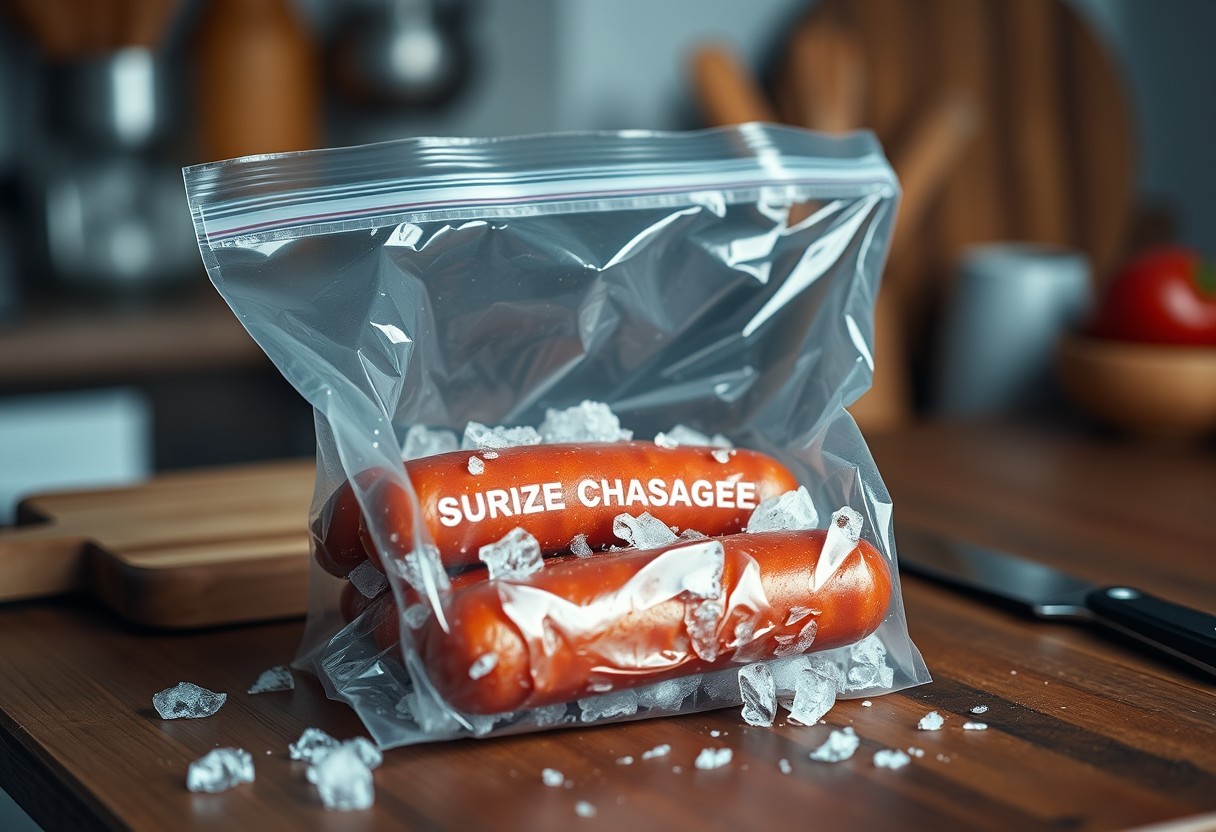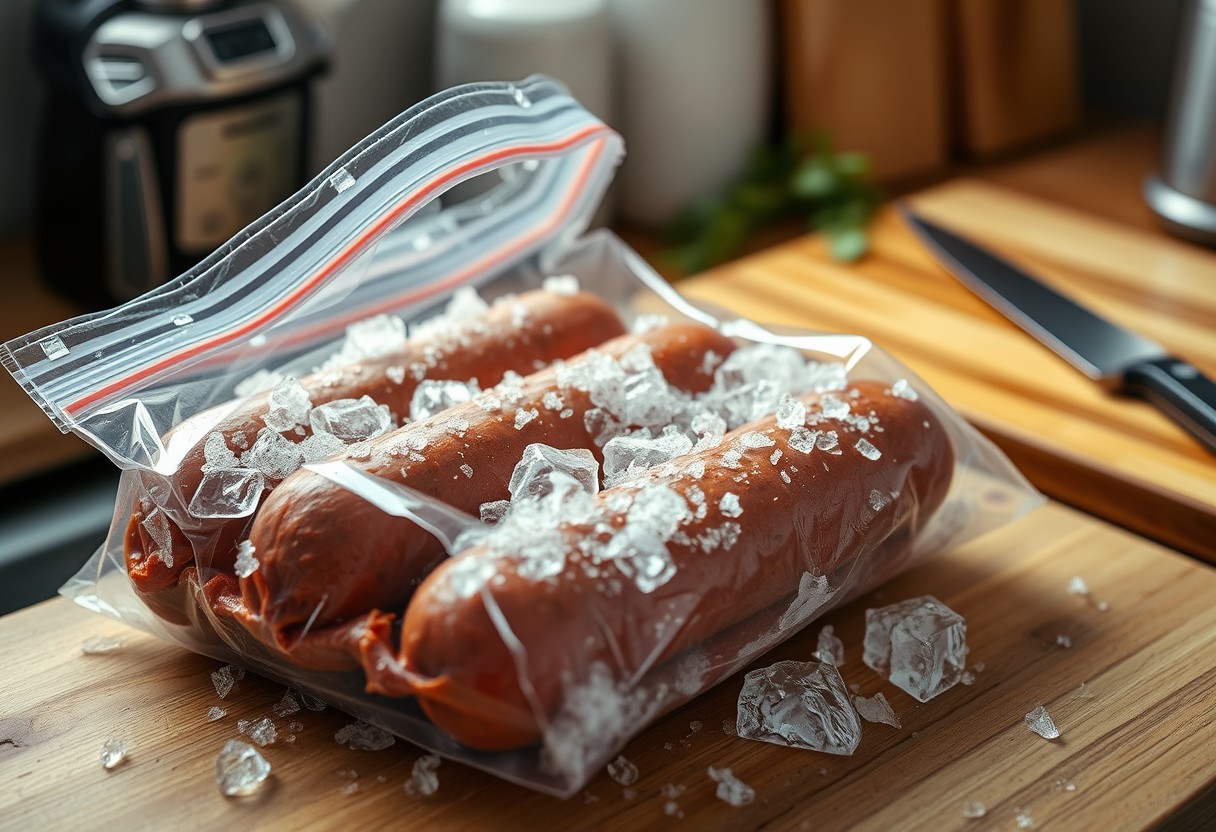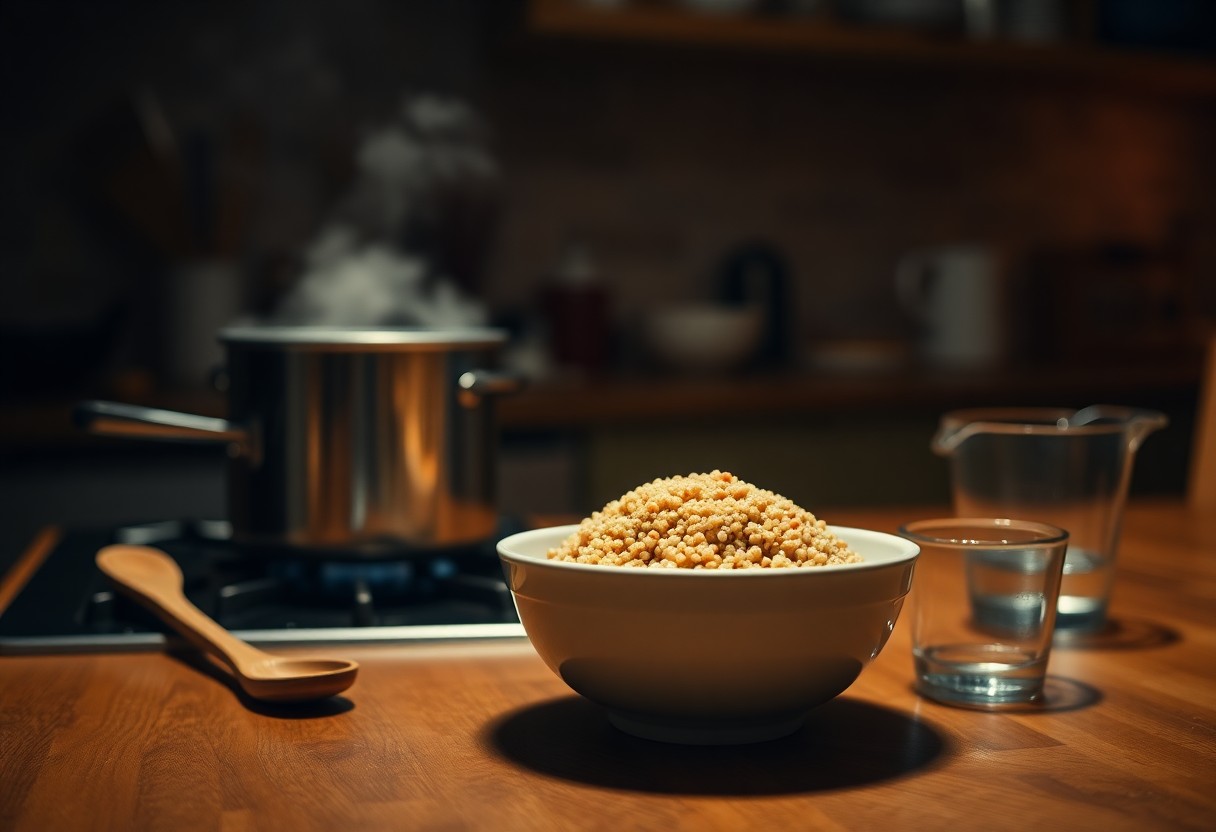Many home cooks wonder if they can freeze chorizo to extend its shelf life and reduce waste. Whether you have a surplus of this flavorful sausage or simply want to prepare meals in advance, knowing how to properly store chorizo can help preserve its taste and texture. In this guide, you’ll learn the best practices for freezing chorizo, as well as tips on how to defrost and use it effectively in your recipes, ensuring you always have this delicious ingredient on hand.
Key Takeaways:
- Freezing Fresh Chorizo: You can freeze fresh chorizo; it maintains its flavor and texture well when frozen for up to 3 months.
- Cooking Before Freezing: Cooking chorizo before freezing can enhance its taste and make it easier to store and use in recipes later.
- Thawing Tips: Always thaw chorizo in the refrigerator or microwave to ensure safety and to preserve its quality.

Understanding Chorizo
To appreciate chorizo fully, you should know that it is a highly seasoned pork sausage, originating from Spain and Mexico. This popular sausage is known for its rich, smoky flavor emanating from a blend of spices, particularly paprika, which gives it its distinctive red hue. Chorizo can be consumed fresh or cured, making it versatile for various dishes, from breakfast tacos to hearty stews.
Types of Chorizo
To distinguish the varieties of chorizo, consider the following:
- Spanish Chorizo – typically cured and dried, often enjoyed sliced.
- Mexican Chorizo – fresh, spiced ground pork often used in cooking.
- Vegetarian Chorizo – plant-based alternative for meat lovers.
- Chorizo de Bilbao – a cured variety popular in the Philippines.
- Pork Chorizo – classic preparation made primarily from pork meat.
This knowledge will help you choose the right type of chorizo for your recipes.
| Type of Chorizo | Description |
|---|---|
| Spanish Chorizo | Cured and dried, perfect for slicing. |
| Mexican Chorizo | Fresh, spiced sausage ideal for cooking. |
| Vegetarian Chorizo | Plant-based alternative to traditional chorizo. |
| Chorizo de Bilbao | Filipino version, often used in local dishes. |
| Pork Chorizo | Classic preparation primarily made with pork. |
Nutritional Value
Value-wise, chorizo contains protein, fats, and various vitamins and minerals, but its nutritional profile can vary significantly between types and preparation methods. It’s typically rich in fat, particularly saturated fat, which is vital to consider when planning your meals.
With its flavorful ingredients, chorizo offers certain health benefits, such as protein for muscle maintenance and vitamin B12 for energy production. However, moderation is key, as excessive consumption can lead to health issues from its high calorie and sodium content. Understanding these aspects will help you enjoy chorizo as part of a balanced diet.

Freezing Chorizo
It is entirely possible to freeze chorizo, and doing so can extend its shelf life significantly. Whether you have leftover chorizo from a recipe or you purchased extra for later use, freezing is an effective way to maintain its flavor and texture. Simply ensure that the chorizo is well-wrapped or stored in an airtight container to prevent freezer burn. With proper freezing methods, you can enjoy your chorizo at a later date without compromising its quality.
Best Practices for Freezing
An effective way to freeze chorizo is to portion it into smaller sizes, perfect for future meals. Start by wrapping it tightly in plastic wrap or aluminum foil, and then place it in a freezer-safe bag or airtight container. Make sure to remove as much air as possible to prevent freezer burn. It’s also a good idea to label your packages with the date, so you keep track of how long they’ve been stored.
How Long Can You Freeze Chorizo?
Any type of chorizo can be frozen for a period of time, but for optimal flavor and freshness, it is best to consume frozen chorizo within three to six months. While it may still be safe to eat beyond this timeframe, it can lose some of its original taste and texture. Properly sealed chorizo can retain its quality for quite a while when stored in the freezer.
The length of time you can freeze chorizo depends on its type—fresh or cured. Fresh chorizo typically lasts up to three months in the freezer, while cured varieties can maintain their quality for about six months. Always check for signs of freezer burn or changes in color or texture before using frozen chorizo. Following these guidelines will help you enjoy your frozen chorizo to its fullest potential.
Thawing Chorizo
Your chorizo can be safely thawed using one of several methods that prevent the risk of spoilage. The most effective way is to move it from the freezer to the refrigerator, allowing it to thaw gradually over several hours or overnight. If you’re short on time, you can also use the microwave or submerge it in cold water, changing the water every 30 minutes to maintain a safe temperature. Always ensure the chorizo is cooked immediately after thawing with quick methods to ensure food safety.
Safe Thawing Methods
Thawing chorizo can be done safely in a few different ways. The refrigerator method is ideal, as it maintains a consistent temperature, minimizing the risk of bacterial growth. Alternatively, you can use the microwave for a quick defrost, but be sure to cook it immediately after to eliminate any potential pathogens. The cold water method is also effective; just keep the packaging sealed and change the water regularly to keep it cold. Always avoid thawing at room temperature to reduce the risk of spoilage.
Signs of Spoilage
Chorizo can spoil, and identifying the signs is crucial for your safety. If your chorizo develops an unusual odor, a slimy texture, or discoloration, it’s likely no longer safe to eat. Additionally, check for any signs of freezer burn, which can occur if the chorizo is not properly sealed. If you are ever in doubt about the freshness of your chorizo, it’s best to err on the side of caution and discard it to avoid foodborne illness.
Safe storage and handling are imperative in maintaining the quality of your chorizo. While it may be tempting to consume if you’re unsure, trusting your senses is key. An off-smell, unusual colors, or a sticky feel are all red flags. To ensure you’re eating only safe and flavorful chorizo, always inspect it thoroughly after thawing. Keep in mind, when it’s in doubt, throw it out!
Cooking Frozen Chorizo
Many people find cooking frozen chorizo to be a convenient option when they’re in a pinch. This flavorful sausage can be prepared directly from frozen or thawed, making it versatile for a range of dishes. Whether you’re adding it to a stew, using it as a topping, or incorporating it into tacos, frozen chorizo retains its taste and texture, allowing you to enjoy your favorite recipes without much hassle.
Direct Cooking from Frozen
Chorizo can be cooked straight from the freezer with minimal adjustment. Simply remove the outer packaging and place the chorizo in a skillet over medium heat. As it defrosts, you can break it apart with a spatula, allowing it to cook evenly. Make sure to cook it thoroughly, as the temperature needs to reach at least 160°F for food safety.
Recipes Using Thawed Chorizo
Direct cooking from frozen adds convenience, but thawed chorizo allows for more diverse culinary options in your kitchen. You can easily incorporate thawed chorizo into your favorite recipes, enhancing your dishes with its rich, spicy flavor. From breakfast burritos to chorizo-stuffed peppers, the options are endless. Simply thaw your chorizo in the refrigerator overnight for best results, and you’ll be ready to whip up a delicious meal.
Recipes that utilize thawed chorizo can bring a new level of flavor to your cooking. Consider making a creamy chorizo pasta or a hearty chorizo and bean chili. This type of preparation lets you explore various tastes while controlling the ingredient portions. The versatility of thawed chorizo opens doors to many cultural cuisines, allowing you to create dishes that suit any palate or event. The next time you plan a meal, remember that thawed chorizo can elevate your culinary creations!
Frequently Asked Questions
Once again, people often wonder about the best practices for freezing chorizo. This chapter addresses common concerns, including whether you can refreeze chorizo after it has been thawed and what to expect if you freeze it for an extended period. Knowing how to handle your chorizo carefully can help preserve its quality and flavor, making your culinary experience even more enjoyable.
Can You Refreeze Chorizo?
An important consideration when dealing with chorizo is whether you can refreeze it after it has been thawed. While technically possible, it is recommended that you only refreeze chorizo if it has been thawed in the refrigerator and not left at room temperature. Proper handling will help maintain the quality and flavor of your chorizo, allowing you to enjoy it in your favorite dishes later.
What Happens If You Freeze Chorizo Too Long?
What you may not realize is that freezing chorizo for extended periods can affect its texture and flavor. As chorizo remains in the freezer, the quality can deteriorate, leading to freezer burn or loss of taste, making it much less enjoyable when you finally decide to use it.
Refreezing is not the only concern; excessively freezing chorizo can introduce freezer burn, which manifests as dry, discolored patches on the meat. This results from air exposure, leading to a change in the texture and taste. Additionally, compounds within the chorizo can break down over time, further diminishing its flavor. To keep your chorizo tasting fresh, it’s best to consume it within three to six months of freezing, ensuring it retains its robust and savory character.
Tips and Tricks for Storing Chorizo
All chorizo, whether fresh or cured, benefits from proper storage. To maximize its freshness and flavor, follow these helpful tips:
- Keep chorizo in the coldest part of your refrigerator.
- Use airtight containers or resealable bags to prevent moisture and odors.
- Store chorizo in portions to avoid unnecessary thawing.
- Consider freezing as a longer-term storage option.
Any extra care you take will enhance your chorizo’s shelf life and taste.
Vacuum Sealing vs. Traditional Methods
For optimal preservation, vacuum sealing is a superior method compared to traditional storage techniques. By removing air from the packaging, you effectively inhibit bacteria growth and prevent freezer burn, allowing your chorizo to maintain its flavor and texture longer. While traditional methods can be effective, they are more prone to oxidation and spoilage.
Labeling and Dating
Traditional labeling and dating of your chorizo can prevent confusion about freshness. Always use markers or stickers to clearly indicate the date when you store your chorizo, whether in the fridge or freezer. This simple practice allows you to keep track of how long the chorizo has been stored and ensures you use it within an appropriate timeframe.
Understanding the importance of labeling and dating is crucial for safe food storage. By marking the date on your chorizo, you not only create an inventory of what you have on hand but also help avoid food waste. This practice enables you to enjoy your chorizo while it’s at its best, ensuring maximum flavor and quality every time you cook with it.
Final Words
With this in mind, you can confidently freeze chorizo to extend its shelf life without compromising its flavor or quality. Whether you choose to freeze it raw or cooked, ensure it’s stored in an airtight container or vacuum-sealed bag to prevent freezer burn. Just remember to label your packaging with the date, so you can enjoy your delicious chorizo later with ease. By following these guidelines, you’ll be able to savor your favorite chorizo dishes whenever the craving strikes, without worrying about spoilage.





Leave a Reply